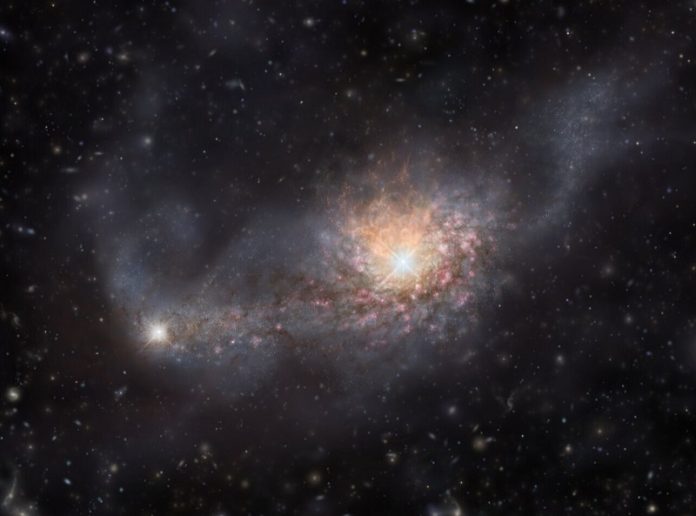
Astronomers have made an exciting discovery: they’ve spotted two galaxies in the process of merging, a cosmic event that happened 12.8 billion years ago.
This merger is set to create what’s known as a “monster galaxy,” one of the brightest objects in the universe.
This discovery is important for understanding how galaxies and black holes developed in the early universe.
The findings, published in The Astrophysical Journal, shed light on how these massive cosmic structures come to be.
Quasars, some of the brightest objects in the universe, are powered by matter falling into a supermassive black hole at the center of a galaxy. Scientists believe that when two galaxies full of gas merge, their gravitational forces cause gas to flow toward the supermassive black hole in one or both of the galaxies. This gas flow fuels quasar activity, making the galaxy shine brightly.
To explore this theory, a team of international researchers led by Takuma Izumi used a powerful radio telescope called ALMA (Atacama Large Millimeter/submillimeter Array) to study the earliest known pair of close quasars. These quasars were discovered by Yoshiki Matsuoka at Ehime University in Japan using images from the Subaru Telescope.
The pair of quasars, located in the direction of the constellation Virgo, existed when the universe was just 900 million years old. They are still quite dim, which means the quasars are in the early stages of their development. ALMA’s observations mapped out the galaxies hosting these quasars and revealed that the two galaxies are connected by a bridge of gas and dust, indicating that they are merging.
The ALMA data also showed that these galaxies have a lot of gas, which is essential for forming new stars. This suggests that, as the galaxies merge, they will not only trigger intense quasar activity but also a rapid burst of star formation, known as a “starburst.”
The combination of starburst and quasar activity is expected to create an extremely bright object in the early universe, known as a “monster galaxy.”
Source: KSR.



